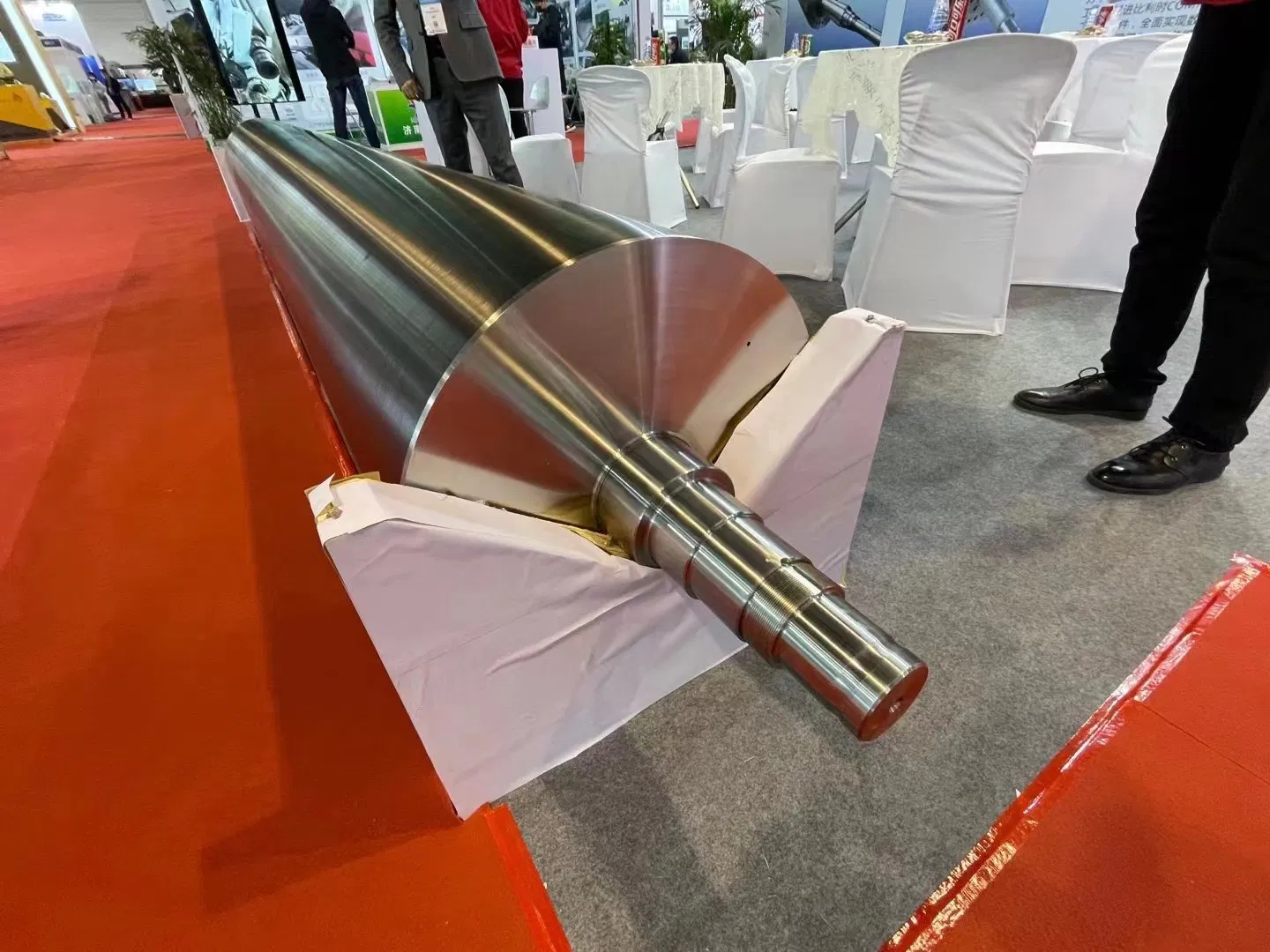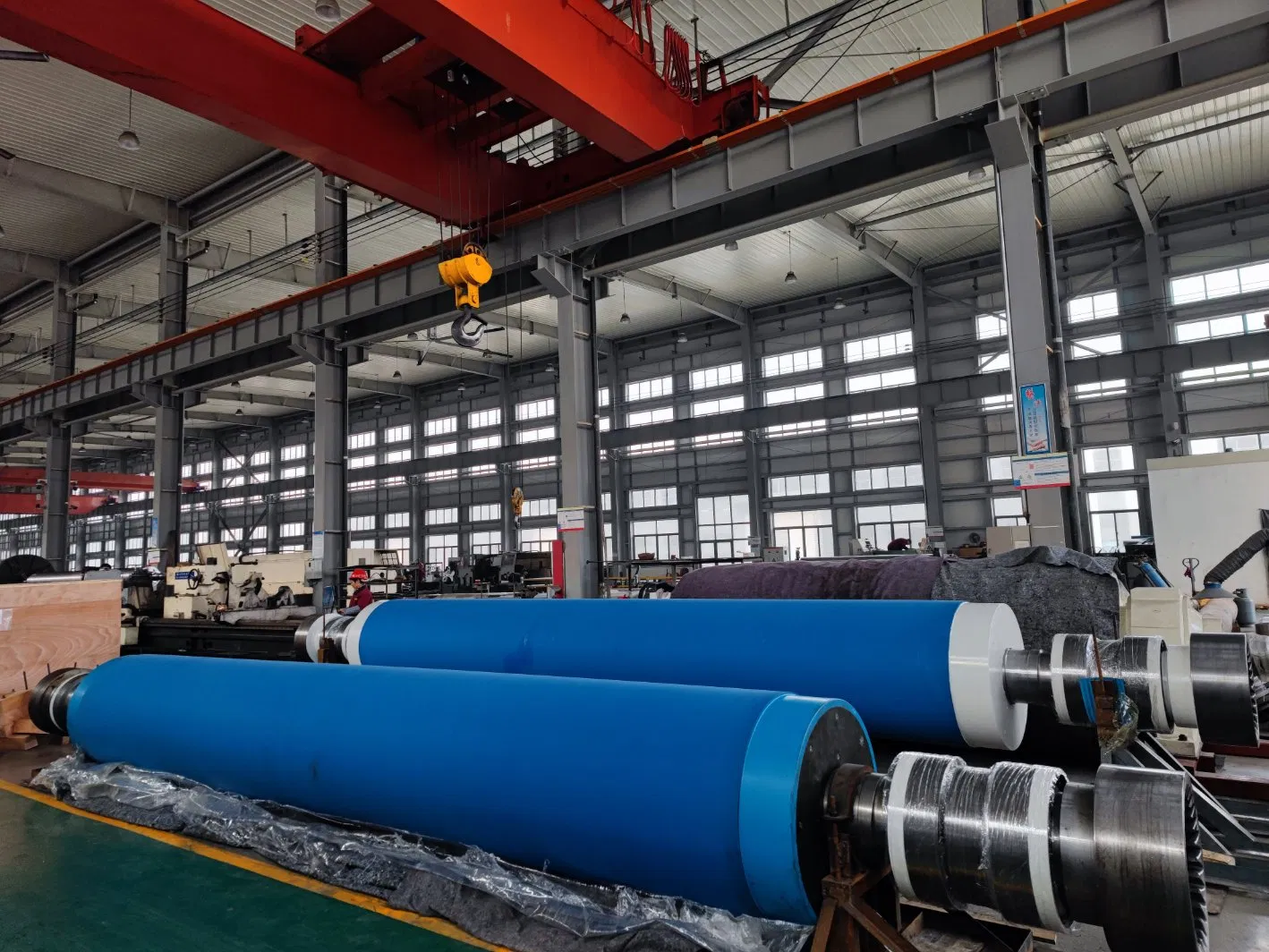Have you ever stopped to think about what makes paper, that ubiquitous material we use daily, actually come into being? It’s a complex process, involving massive machinery and intricate engineering. At the heart of this operation, literally shaping the very fabric of paper, are the unsung heroes: the rolls for paper industry. These aren't just simple cylinders; they are precision-engineered components, each playing a vital role in transforming a watery pulp into the smooth, finished sheets we recognize. Frankly speaking, without these specialized rolls, modern paper production as we know it would be impossible.
From the initial dewatering of the pulp to the final calendering that gives paper its desired smoothness and thickness, rolls are indispensable. They are subjected to immense pressures, high temperatures, and corrosive environments, demanding exceptional durability and precise manufacturing. In my experience, understanding the nuances of these components is key to appreciating the efficiency and quality standards of today's paper mills. Let's embark on a journey to explore the fascinating world of paper machine rolls.
The Vital Role of Rolls in Paper Manufacturing
The journey of paper begins with a slurry of fibers and water, and it's the rolls for paper industry that guide this mixture through various stages, progressively removing water, pressing fibers together, and refining the sheet's surface. Each type of roll serves a distinct purpose, contributing to the overall quality and efficiency of the paper-making process.
Wet End Rolls: Shaping the Sheet
At the "wet end" of the paper machine, where the pulp slurry is first introduced, rolls are crucial for forming the nascent paper web and initiating dewatering.
- Breast Rolls: These are among the first rolls the pulp encounters, supporting the forming fabric (wire) as it receives the slurry. Their design ensures even distribution and initial water drainage.
- Forming Rolls/Dandy Rolls: Often used to improve sheet formation and create watermarks, these rolls gently press the fibers, aiding in water removal and fiber orientation.
- Couch Rolls: Positioned at the end of the forming section, couch rolls are critical for separating the newly formed paper web from the forming fabric. They apply suction to remove a significant amount of water, giving the web enough strength to be transferred to the press section.
Press Section Rolls: Compacting and Drying
Once the paper web has some integrity, it moves to the press section, where large, heavy rolls apply mechanical pressure to squeeze out more water. This is a critical stage for energy efficiency, as mechanical dewatering is far less energy-intensive than thermal drying.
- Press Rolls (Nip Rolls): These are typically arranged in nips (points of contact) where the paper web passes between two rolls, often one hard and one soft, to exert tremendous pressure. This action compacts the fibers, increases sheet density, and significantly reduces moisture content.
- Suction Press Rolls: Incorporating a vacuum system, these rolls help draw water away from the sheet as it's pressed, further enhancing dewatering efficiency.

Materials and Manufacturing: Engineering Excellence for Durability
The environment inside a paper mill is notoriously harsh. Rolls must withstand constant abrasion, high temperatures, corrosive chemicals, and immense mechanical stresses. This necessitates the use of specialized materials and highly precise manufacturing techniques. Interestingly enough, the choice of material directly impacts a roll's performance, lifespan, and the quality of the final paper product.
Core Materials and Coatings
The core of most industrial paper mill rollers is typically made from high-grade steel or cast iron, chosen for its strength and rigidity. However, it's the surface that truly defines a roll's function and durability.
- Rubber Covers: Soft rubber covers are common on press rolls, providing a resilient surface that can conform to the paper web, ensuring even pressure distribution and efficient dewatering. The specific rubber compound is tailored for properties like hardness, heat resistance, and chemical compatibility.
- Polymer Composites: Advanced polymer composites offer excellent wear resistance, chemical inertness, and lighter weight, making them increasingly popular for various roll applications, especially in areas prone to corrosion or requiring specific surface properties.
- Ceramic and Metallic Coatings: For rolls requiring extreme hardness, wear resistance, or specific surface finishes (e.g., calender rolls), thermal spray coatings of ceramics (like tungsten carbide) or specialized metals are applied. These coatings provide superior longevity and can be ground to extremely tight tolerances.
Precision Manufacturing and Finishing
The manufacturing of custom roll manufacturing for paper is a highly specialized process. It involves meticulous steps to ensure dimensional accuracy, surface finish, and dynamic balance.
- Machining and Grinding: Rolls are machined to precise diameters and then ground to achieve the desired surface roughness and parallelism. Even microscopic imperfections can lead to uneven paper quality or premature roll failure.
- Balancing: Given their high rotational speeds, rolls must be dynamically balanced to prevent vibrations, which can cause machine damage, reduce bearing life, and negatively impact paper quality.
- Crowning: Many rolls are "crowned," meaning their diameter is slightly larger in the middle than at the ends. This compensates for deflection under load, ensuring uniform pressure across the entire width of the paper web.
To be honest, the level of precision required in manufacturing these large components is truly astounding. A deviation of even a few microns can affect the entire production line.
Maintenance and Longevity: Ensuring Peak Performance of Paper Mill Rolls
Even with superior materials and manufacturing, the harsh operating conditions in a paper mill mean that regular maintenance of paper machine rolls maintenance is absolutely critical. Proper care extends the lifespan of these expensive components, prevents costly downtime, and ensures consistent paper quality.
Routine Inspections and Cleaning
Regular visual inspections are the first line of defense. Technicians look for signs of wear, damage, or buildup. Cleaning is also vital, as fiber and chemical residues can accumulate on roll surfaces, leading to uneven pressure, poor dewatering, or even sheet breaks. High-pressure showers and specialized cleaning agents are often employed.
Grinding and Resurfacing
Over time, roll surfaces can wear unevenly or develop flat spots, affecting performance. Regular grinding and resurfacing are essential maintenance activities. This involves removing a thin layer of material from the roll surface to restore its concentricity, parallelism, and desired surface finish. For rubber-covered rolls, this might involve regrinding the rubber or, eventually, replacing the entire cover.

Bearing Maintenance
The bearings supporting the rolls are subjected to immense loads and high speeds. Proper lubrication, alignment, and timely replacement of bearings are paramount to preventing catastrophic roll failure and ensuring smooth operation. Many experts agree that bearing failures are a leading cause of unscheduled downtime in paper mills.
Preventive and Predictive Maintenance
Modern paper mills increasingly rely on preventive and predictive maintenance strategies for their rolls for paper industry. This includes:
- Vibration Analysis: Monitoring roll vibrations can detect imbalances, bearing issues, or other mechanical problems before they lead to failure.
- Thermal Imaging: Identifying hot spots on rolls or bearings can indicate friction or impending failure.
- Ultrasonic Testing: Used to detect internal flaws or delamination in roll covers.
These proactive measures significantly reduce the risk of unexpected breakdowns, optimize operational efficiency, and extend the service life of valuable assets.
Innovations and Future Trends: Advancing Roll Technology
The paper industry is constantly evolving, driven by demands for higher quality, increased efficiency, and reduced environmental impact. Roll technology is no exception, with continuous innovation pushing the boundaries of what's possible.
Smart Rolls and IoT Integration
The advent of Industry 4.0 and the Internet of Things (IoT) is transforming roll monitoring. "Smart rolls" equipped with embedded sensors can provide real-time data on temperature, pressure, vibration, and even surface wear. This data can be wirelessly transmitted to a central control system, enabling predictive maintenance, optimizing process parameters, and reducing human intervention. I've found that this level of data integration is revolutionizing how mills manage their assets.
Advanced Materials and Coatings
Research into new materials and surface coatings continues to yield impressive results. Lighter, stronger composite materials are being developed for roll cores, reducing energy consumption and improving dynamic performance. New ceramic and polymer coatings offer enhanced wear resistance, improved release properties (preventing sticking of the paper web), and better chemical resistance, leading to longer service intervals and improved paper quality.
Energy Efficiency and Sustainability
With rising energy costs and environmental concerns, there's a strong focus on making paper production more sustainable. Innovations in roll design contribute to this by:
- Optimized Dewatering: Rolls designed for more efficient water removal in the press section reduce the energy needed for subsequent thermal drying.
- Reduced Friction: Improved bearing designs and roll surface finishes can minimize friction, leading to lower energy consumption.
- Lighter Rolls: Reducing the mass of rotating rolls can also contribute to energy savings.
These advancements underscore the critical role of ongoing research and development in maintaining the competitiveness and environmental responsibility of the paper industry.
Conclusion: The Unsung Heroes of the Paper Industry
From the initial formation of the paper web to the final finishing touches, rolls for paper industry are indispensable. They are the workhorses of the paper machine, silently enduring immense stresses to produce the paper products we rely on daily. Their design, material composition, manufacturing precision, and meticulous maintenance are all crucial factors determining the efficiency, quality, and profitability of a paper mill.
The continuous innovation in roll technology, driven by advancements in materials science, sensor technology, and smart manufacturing, promises even greater efficiency and sustainability for the future of paper production. So, the next time you pick up a book or write a note, take a moment to appreciate the complex engineering and the vital role played by these unsung heroes – the remarkable rolls that make it all possible.
For more detailed information, please visit our official website:Rolls for paper industry
About the author: Dr. Evelyn Reed is a seasoned industrial engineer with over two decades of experience specializing in manufacturing processes and machinery for heavy industries. Her expertise particularly shines in the pulp and paper sector, where she has consulted on optimizing production lines, improving equipment longevity, and implementing advanced maintenance strategies for critical components like paper machine rolls. Dr. Reed is passionate about sustainable industrial practices and the integration of smart technologies.


